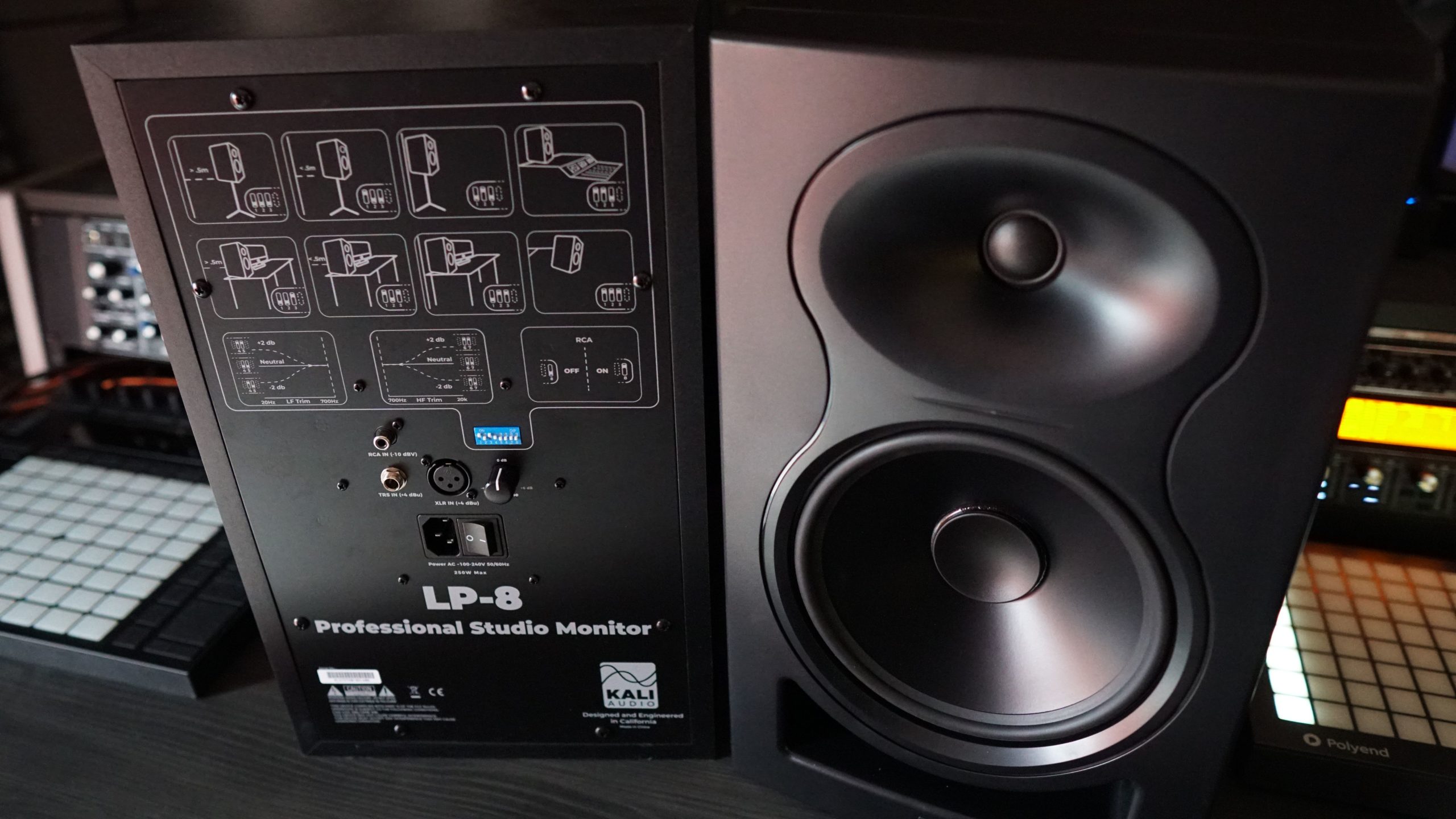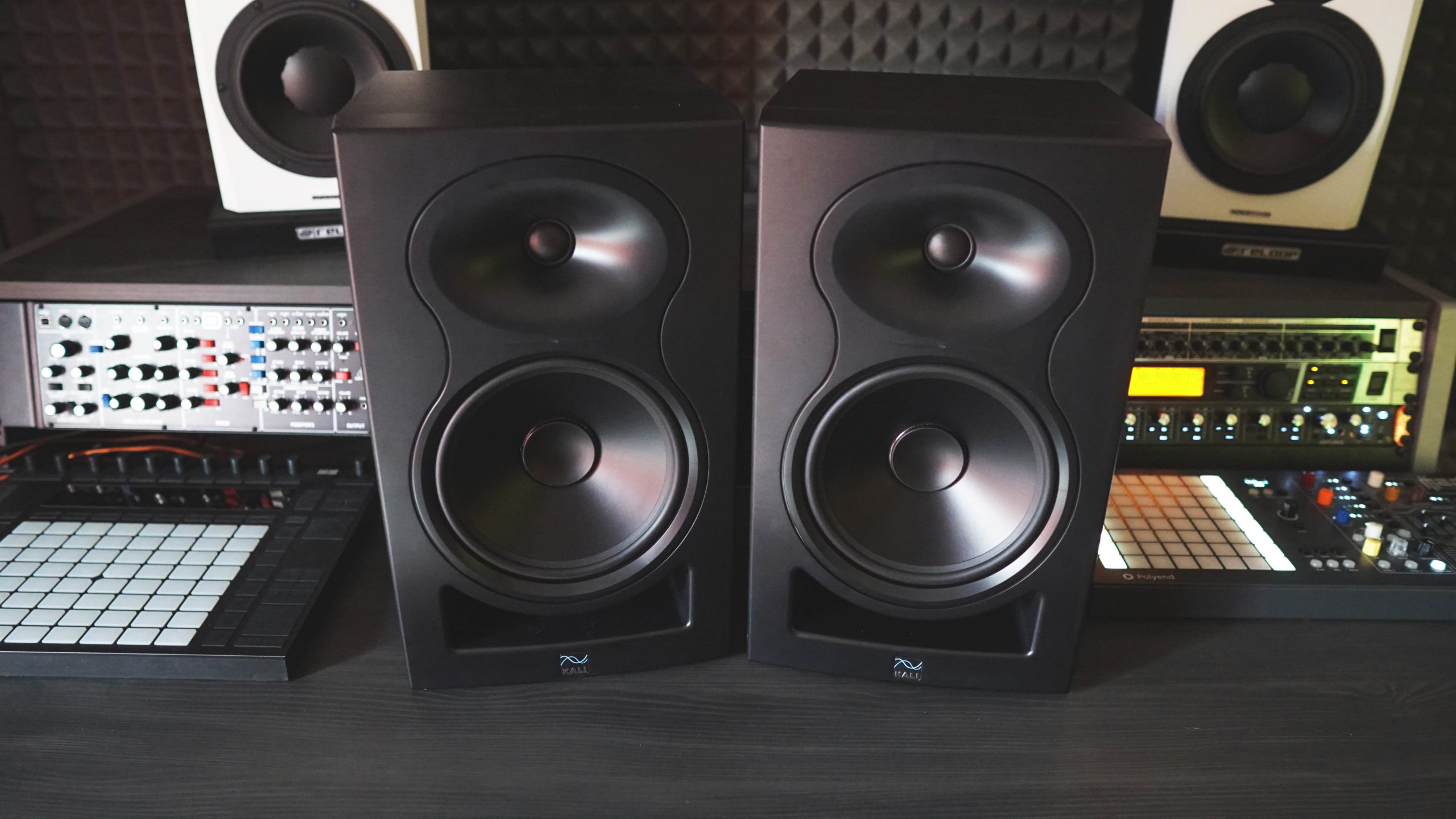Kali Audio LP-8, this is the future!
I’m a composer and producer of original music of many genres, and these are the best studio monitors I’ve ever personally had, because of the highly accurate stereo image and frequency response. I highly recommend these for music studios.
The Kali LP-8’s feature an 8” woofer and are the bigger brother of the LP-6’s (6.5” woofers), a series of speaker intended to be some of the most balanced and evenly responsive speakers on the market. They’re Californian designed, very affordable and very honest. They’re painfully honest. But, in mixing, if there’s no pain when listening back to mixes that you thought were finished, then there’s no gain. The Kali Audio LP-8’s feature Kali’s boundary EQ settings to assist in tuning your speakers to the room, a balanced sound fairly solid low-end.

Starting with the front of the studio monitors, the LP-8 features a one-inch soft dome tweeter, an eight-inch woofer, and a front-facing port tube. The tweeter features Kali Audio’s “3-D Imaging Waveguide” technology which the company claims gives the monitors a more natural and lifelike sound and makes it easier to hear details in the music you are playing. The eight-inch woofers produce a clear low end that doesn’t sound boosted or overhyped. It has a front-facing port tube instead of a rear-facing one found on many other studio monitors to give the LP-8 a more measured low-end response when placed near a wall, which tends to happen in bedroom and home studios.
Moving to the back of the LP-8 you have balanced inputs on XLR and 1/4” TRS and unbalanced inputs on RCA. Next to the inputs, you have a knob for volume control, a built-in power supply that uses a standard IEC power cable, and a power switch. Above these inputs and controls, we have what Kali Audio calls “Boundary EQ Control”. This is a series of dip switches to control the EQ of the monitors along with a visual guide to help you EQ the monitors depending on how and where you have them set up in your studio.
3-D Imaging Waveguide
The waveguide on Project Lone Pine monitors allows you to hear spatial details and a soundstage that is wider, taller, and deeper than the space between the speakers themselves.
High dynamic range, low distortion
The dual layer, large diameter voice coil on the LP-Series helps keep the sound clear and free of distortion.
Low noise port tube
The LP-6 and LP-8 both have the clean, punchy bass of a front-ported speaker with very low noise from the port tube.
High Output
At continuous reference-level output, the LP-Series monitors have at least 20 dB headroom at the listening position. The LP-6 has enough output for most 1-2 person setups, and LP-8 can handle larger setups easily.
Ample headroom ensures that even loud mixes with high dynamic range will come through clearly.
Bass Power
Bass on the LP-Series monitors is delivered by larger magnets and larger voice coils than any comparable speakers on the market. This gives you more accurate bass response that extends lower, so you can dial in exactly the low end sound you need.
FEATURES
Easy Connections
- The LP-8 both feature balanced XLR and TRS inputs, and an unbalanced RCA input.
- The RCA input can be set to -10 dBu sensitivity when you’re using consumer devices like a laptop or smartphone’s headphone jack.
Class D Power
- The integrated Class D Power amp delivers clean, reliable power that’s optimized to this speaker.
- Both models use 40W for the 1” soft dome tweeter. The LP-6 uses 40W for the 6.5-Inch woofer, and the LP-8 uses 60W for the 8-Inch woofer.
- Powered: Yes
- Amplifier Class: D
- Power Configuration: Bi-Amped
- LF Power: 60 W
- HF Power: 40 W
- Total Power: 100 W
- LF Driver: 8″ Woofer
- HF Driver: 1″ Soft Dome Tweeter
- Freq. Response: (-10 dB) 37 Hz – 25 kHz
- Frequency Range: (±3 dB) 45 Hz – 21 kHz
- Crossover: 1.8 kHz
- Listening Distance: (85 dB Continuous, 20 dB headroom) 2.2 Meters
- Max SPL:114 dB
- Balanced Inputs: 1 x TRS 1 x XLR
- TRS/XLR Input Sensitivity: +4 dB
- RCA Input Sensitivity: -10 dB
- HF Trim: -2 dB, ±0 dB, +2 dB
- LF Trim: -2 dB, ±0 dB, +2 dB

No Comments